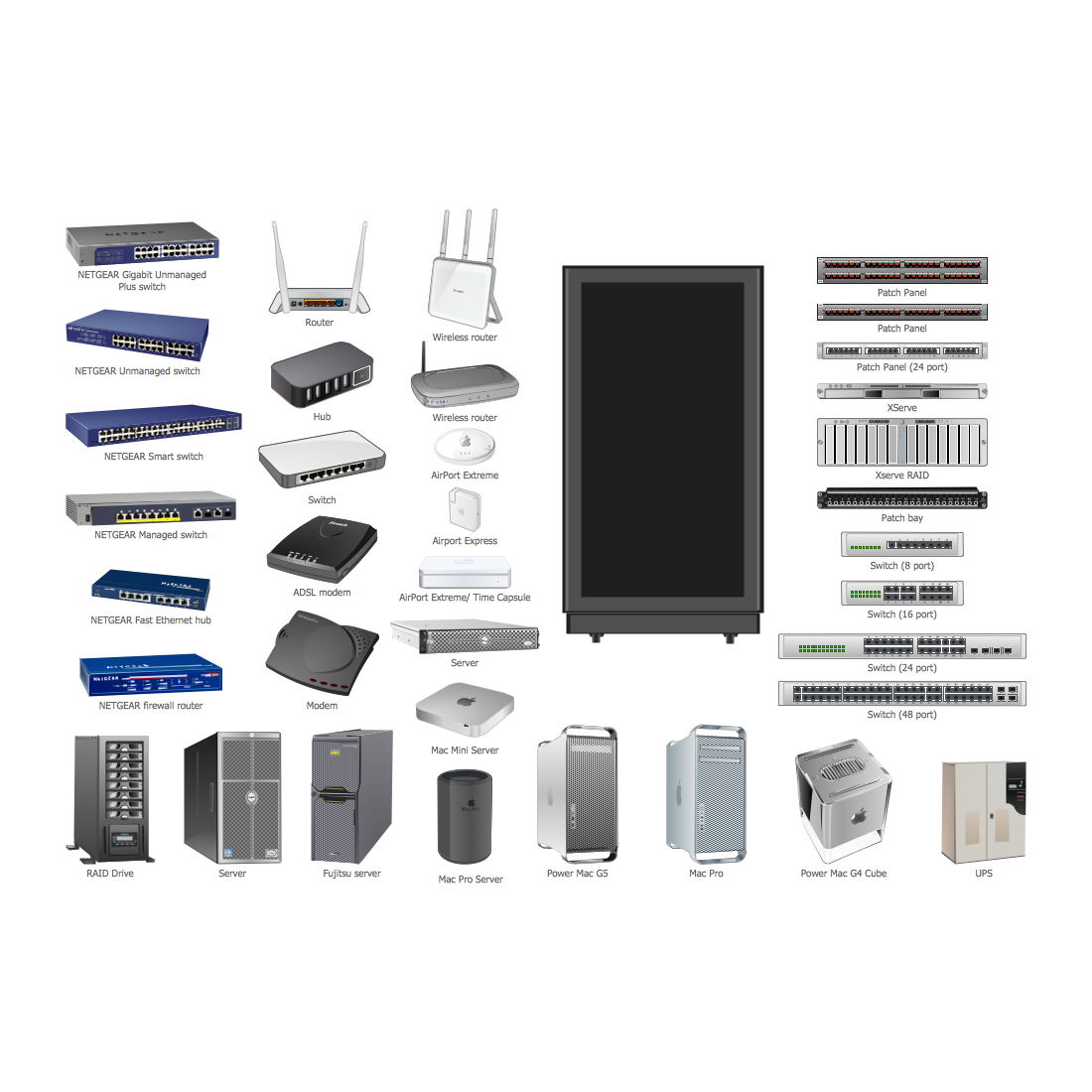Different Networking Devices And Hardware Types — Hub, Switch, Router, Modem, Bridge, Repeater

Published by - Cables Online on February 19, 2019 Technology
A computer network consists of various networking devices that have specific roles to play. Each networking device is assigned to carry out a specific task and perform different works. A computer network includes devices like a hub, switch, router, modem, bridge, repeater, etc. some of which also have some sub-divisions which we will look at further in this article.
When you are setting up a computer network at your home or office you will need a set of hardware devices. These devices will allow the data transmission to happen across your computer network. But what are these devices? And what function does a specific networking device carry out? It is important to know the basics of networking devices before setting up a computer network so that you can build a good one. Let’s have a look at the answers to the above questions.
Different Networking Devices
HUB
A hub is one of the basic components in a computer network. It works in the physical layer of OSI model. A hub does not have decision making capability and, therefore, is considered as a non-intelligent device. Its the main function is to connect multiple network hosts. Basically, a hub takes the data in one of its ports and copies that data packet to send it to all of the other ports connected to the network. That means a hub sends all the data it receives to the ports. As a hub does not have decision making the power it is not capable to find out the correct path for data packets. This, in turn, leads to inefficiencies in the network. There are mainly two types of hubs;
Active Hub – An active hub is considered smarter than its counterpart – passive hub. This hub has its own power supply and it not only provides a path for data packets but also clean, strengthen, and concentrate the data signals before sending them to the port they belong. If you want to increase the distance between nodes then these are the perfect ones. An active hub is also known as a ‘repeater’.
Passive Hub – A passive hub does not modify, strengthen, or boost the incoming data signal. These hubs work as a meeting point for all the wires coming from nodes and the power supply from an active hub. You cannot extend the distance between nodes using the passive hubs.
What Is HDMI?
That brings us to the basic question—what is HDMI? High Definition Multimedia Interface (HDMI) is a technology. A technology that is an excellent standard for creating high–bandwidth connections to transmit digital data, between devices. Simply defined, this will support combines both audio and video into one convenient cable.

Cablesonline stocks popular brands of HDMI Cables that include manufacturers like AlphaWire, Powers, EXFO, IEC LOCK and Inno among others. These have been market players in the consumer electronics market since long and have the advantage of a rapid rate of adoption although the move towards HD content is rather slow. Although the latest HDMI standard Version 2.0 was released 2 years ago, many devices in the market still do not support it.
HDMI Cable Uses and Working
A digital alternative to the traditionally used analogue signals like the VGA, Composite Video, S–Video, SCART and few others, HDMI technology is used between video and multi channel audio devices. They can be found in a wide range of new electronic devices including Plasma and LCD screens, Blu-ray Disc players, AV receivers, set–top boxes, PC’s, video game consoles and camcorders.

HDMI Cable support Audio & Video Signals
HDMI technology transmits digital audio and video signals via one high–speed cable. These cables also allow two-way communication between devices. With a good setup, these can give a significant variation to a home theatre system.
HDMI in TMDS Signals

A HDMI cable uses TMDS (Transition Minimized Differential Signaling) technology to encode and transmit the data from both digital devices. As it travels via copper cables, TDMS protects data from deterioration. These cables can transmit uncompressed data without the need to convert content to an analogue signal in between the devices which is required of other older interfaces. Since no conversion is required there is no fluctuation in the video quality; images are smoother and sharper, audio crisp without distortion. For this very reason, HDMI is a popular choice for use between HD devices.
A myth that HDMI cables are needed for massive bandwidth requirements of real HDTV does not hold true. A satellite cable carries hundreds of HD channels. One can get HD video & audio over a regular coaxial cable with high clarity. It is known as HD-SDI and it carries uncompressed, perfect digital video and audio from a plain old RG-6 cable. Broadcasters use it majorly to get better broadcasting for viewers.
Browse Cables Online Store for Branded HDMI Cables
Cables Online has stock of 0.5M, 1.5M, 1M, 10M HDMI high speed Ethernet cables, 1.5M Ultra Slim Cable with Redmere IC, 10M HDM-DVI-D Cable, 10M Cable High Speed With Ethernet Silver-Plated Copper, 10M flat cable high speed with Ethernet, 10M High Speed CABLE with built in booster, 10M playmate high speed Cable, 15CM HDMI F To DVI M Adaptor & DVI Adapter (F), 15M High Speed CABLE with built in booster, 1M HDMI flat cable high speed with Ethernet, 1M HDMI to DVI-D Cable, Fibre Optic Hybrid HDMI Cables, 100M Fibre Optic Hybrid Cable, 30M Fibre Optic Hybrid Cable, 1M Playmate High Speed Cable and several other accessories of HDMI. We ship across Australia including Tasmania & Norfolk Island. Orders over AU$500 are eligible for free shipping across Australia.
Call us on 1300 178 620 or mail to [email protected] for all your cable queries. We are happy to help.
Related Blogs
HDMI Cables give High Speed Media transfer for HDTV
Published by - Cables Online on June 10, 2019







